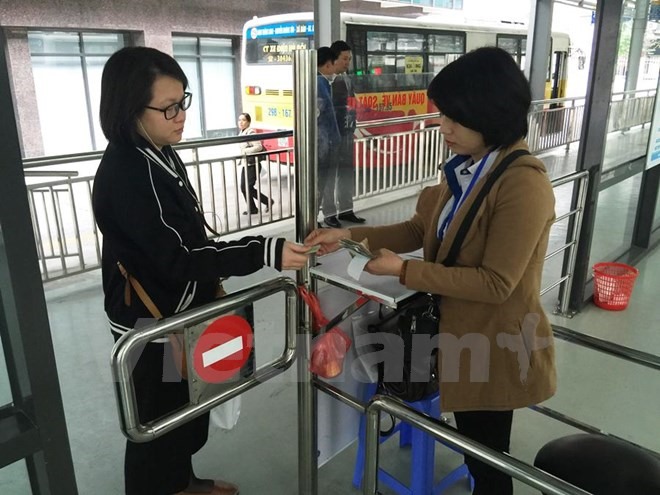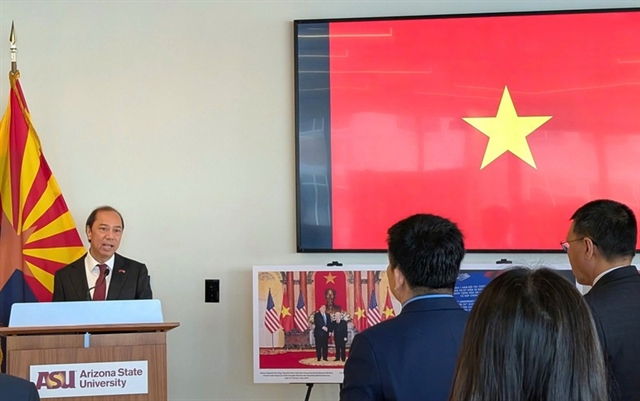 Society
Society

" />Commuters in Hà Nội have to pay to use the bus rapid transit (BRT) service from Monday, after enjoying free rides for more than a month.
 |
| A commuter buys BRT fare at a stop on Kim Mã Street. — VNA/VNS Photo Bùi Lan |
HÀ NỘI — Commuters in Hà Nội have to pay to use the bus rapid transit (BRT) service from Monday, after enjoying free rides for more than a month.
An estimated 380,000 people travelled free of charge on the BRT in January, the first month the new public transport service was operated in the capital.
The bus runs on a 14-km route from Kim Mã Street to Yên Nghĩa Bus Station, completing the journey in 30 to 45 minutes. The BRT buses offer passengers complimentary Wi-Fi service.
From Monday, each trip will cost VNĐ7,000 (US$0.3), which is the same rate as the non-BRT buses, which are partially subsidised by the Government.
Nguyễn Hoànng Hải, director of Hà Nội Public Transport Management and Operation Centre, said that while during the first half of January, many people were using BRT buses simply to experience it, by the second half of the month, commuters using the BRT were those who really needed to travel along the route.
Several types of commuters get concessional rates, including students, workers in industrial zones and senior citizens, who have to pay VNĐ55,000 ($2.43) a month for fixed route and VNĐ100,000 ($4.25) a month for multi-route. Others have to pay VNĐ100,000 and VNĐ200,000 per month, respectively.
Hải said the monthly fares are inexpensive and that if the BRT can ensure good quality of service, frequency and timing, it will attract more commuters.
Nguyễn Thủy, director of Hà Nội BRT Factory, said the number of passengers on Monday did not change compared to the previous days, which suggests that the service has been well-received.
Commuter Trần Thu Trang said she prefers travelling by BRT to her office on Láng Hạ Street as it takes less time than by motorbike. The BRT fare is the same as other buses, but it is far more convenient and much faster, she said.
From this month, the traffic police have also started imposing fines on motorists caught driving in the dedicated BRT lane. Following Government Decree 46/2016/NĐ-CP, issued in 2016, automobiles driving in the BRT lane will be fined VNĐ800,000-1.2 million ($35-53) and motorbikes VNĐ300,000-400,000 ($13-17).
The city plans to operate eight BRT routes by 2030. — VNS




